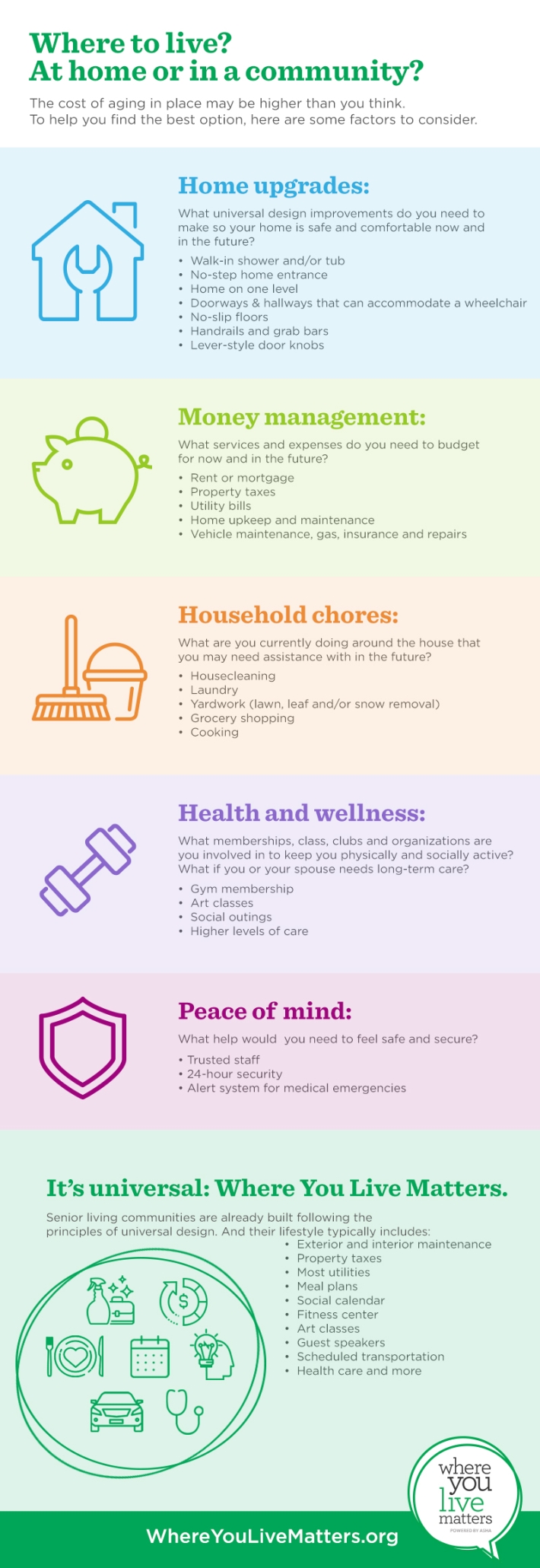The Cost of Aging in Place vs. Moving to a Community
Is aging in place the most cost-effective option for retirement? Check out our infographic to learn more about the costs of aging in place.
According to a survey by AARP, 90% of older adults 65 and better would prefer to stay in their own homes and age in place rather than go to one of their area’s independent living or assisted living communities. Aging in place is defined by the U.S. Centers for Disease Control and Prevention (CDC) as “the ability to live in one’s own home and community safely, independently and comfortably, regardless of age, income or ability level.”
But there’s a cost to aging in place. And your current home may require extensive modifications to ensure that it’s more comfortable, convenient, safer, and easier for you to use. This design concept based on making homes usable by multiple generations is called universal design. It includes features like single-level living space with wider hallways and doorways allowing for wheelchair access; lever-style door handles that are easier to open; nonslip floors; and handrails and grab bars to prevent falls.
Something else to consider while figuring out the cost of aging in place is how much you spend on your current lifestyle and what you (and your partner, if applicable) may require in the future to maintain your current quality of life. What will you do if one of you needs an in-home caregiver to help with activities of daily living like cooking, cleaning and medication reminders? Or what if one of you needs round-the-clock care? Before you decide, here are some things to consider:

If you’re ready to compare the cost of aging in place with moving to a senior living community, you can start reviewing a few communities near you with our Where You Live Matters community finder.
Where You Live Matters is powered by the American Seniors Housing Association (ASHA), a respected voice in the senior housing industry. ASHA primarily focuses on legislative and regulatory advocacy, research, and educational opportunities and networking for senior living executives, so they can better understand the needs of older adults across the country.
Sources:
AARP
National Institute on Aging
